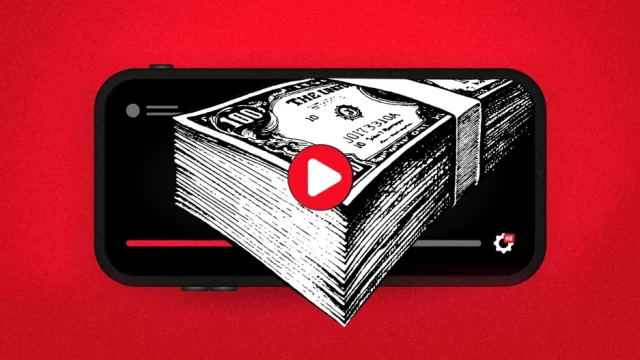- | 11:51 am
Demonetizing extreme YouTube creators may not stop them from earning money

YouTube creators are increasingly turning to outside streams of revenue online, according to a new study from Cornell Tech, and that may not always be a good thing.
Sixty percent of the channels included in the study have used at least one form of “alternative monetization”—such as making their own merchandise, using various donation sites, and participating in affiliate partnerships—to capitalize on their content outside of YouTube’s Partner Program.
These strategies are particularly important for creators making what the researchers describe as “problematic” content, such as channels making alt-right, alt-lite, or manosphere-related videos. The study found that 68% of such channels used at least one form of alternative monetization, in comparison to 56% for other channels.
The study, released today, was done in collaboration with the Swiss Federal Institute of Technology Lausanne.
YouTube’s algorithm demonetizes videos that violate its content guidelines for the Partner Program, which includes hateful, incendiary, or demeaning content, in order to protect advertising interests on the site.
Monetization—and demonetization—have been a part of the YouTube ecosystem since it began sharing money with creators in 2008. The model has seen its share of bumps along the way, like with algorithm changes in 2017 that led to claims of mass demonetization, described as an “Adpocalypse.“
As alt-right creators may make less money in advertising from YouTube, they gravitate toward donation-based contributions on sites like Patreon, or through cryptocurrency and the promotion of their own merch. One creator links her SubscribeStar and PayPal in the description of a video shot from the Canadian truckers’ strike. Another touts links to his merch on Teespring, his books on Amazon, and his Patreon under a video about a media conspiracy theory. Each video has over 100,000 views.
Donation platforms have had mixed responses to alt-right users on their sites. In 2020, Patreon cracked down on profiles spreading information in support of the QAnon conspiracy. SubscribeStar‘s guidelines condemn “[making] bigotry and hate your primary source of income,” although the study found that 15% of channels in its dataset used it to make problematic content. Payment giants like PayPal are even less specific, although those platforms are not built specifically for paid content from creators.
Still, the study makes sure to emphasize that the use of alternative revenue streams is increasing across YouTube, not just among problematic creators. It’s a way for people to be able to be compensated for their work online and, in some cases, earn a living.
In response to a quest for comment, a YouTube spokesperson pointed to the 10 different ways to monetize content through its Partner Program, including more recent additions like “Super Thanks,” which allows viewers to donate to creators directly on the site, and a $100 million fund for creators making Shorts, which are videos capped at 60 seconds.
Whether the way forward is monetization on YouTube’s site or off of it, there is no easy solution. At the very least, the data from Cornell Tech’s study serves as a reference point for the growth and maintenance of alt-right voices on the platform, whether their videos are ad-friendly or not.

































